Upgrading your Surface Pro X's internal storage to a larger, faster drive is easy if you know what you're doing.
For owners of Surface Pro X (or Surface Laptop 3) the ability to upgrade storage with minimal work is a new perk to the Surface line.
But what about the details around such a procedure? What tools do you need? Should you re-paste the thermal enclosure for the SSD? And how do you get Windows 10 on to the new SSD?
All these questions and more are answered in this new guide on how (and why) you may want to upgrade your SSD for Surface Pro X.
Jump to:
- Why upgrade?
- Tools needed
- Making a Windows Recovery Drive
- How to swap the SSD
- Reinstall Windows 10
- Results
Surface Pro X SSD: Why upgrade?
Before we begin, let us discuss why you want to upgrade the internal storage to Surface Pro X.
There are two reasons to consider, with the first being the most obvious:
- You want more internal storage
- You want a faster SSD
The first reason is self-evident. You bought a Surface Pro X with 128 or 256GB of storage, and you want more. Maybe you want 512GB or even 1TB.
A faster SSD less of a reason to upgrade, and should be seen as more of a side benefit. Microsoft ships Surface Pro X with a "BG3" M.2 2230 PCIe NVMe Solid State Drive Internal SSD. But Toshiba/Kioxia now has a BG4 version. On a technical level, BG4 changes from 64L to 96L TLC NAND with four PCIe lanes (instead of two) and can boost capacity to 1TB for the first time in this form factor. And while BG4 lacks DRAM, which is found on more traditional (and larger) SSDs, it does use the Host Memory Buffer (HMB) feature. Anandtech does an excellent deep dive into the improved format.
The bottom line is a Toshiba/Kioxia BG4 M.2 2230 PCIe SSD will have faster read and write speeds over the standard BG3 variant. The catch is that finding a BG4 M.2 2230 SSD is difficult. Toshiba/Kioxia do not (yet) sell BG4 M.2s direct to consumers. Instead, it is an OEM part that must be purchased through business channels like Dell, or, if you are savvy, on eBay, where they are in short supply. The key is to use the product SKU to find the version you want:
- KBG40ZNS128G TOSHIBA BG4 128G PCI-E NVME 2230 SSD (CLASS 35)
- KBG40ZNS256G TOSHIBA BG4 256G PCI-E NVME 2230 SSD (CLASS 35)
- KBG40ZNS512G TOSHIBA BG4 512G PCI-E NVME 2230 SSD (CLASS 35)
- KBG40ZNS1T02 TOSHIBA BG4 1TB PCI-E NVME 2230 SSD (CLASS 35)
Assuming you want to increase the storage and get faster speeds, you will want to search for KBG40ZNS512G (512GB) or KBG40ZNS1T02 (1TB). Pricing at the time of writing is around $85 for 512GB and over $300 for 1TB.
Of course, you could find a 512GB BG3 2230 drive if you do not care about a small performance boost.
For this tutorial, I am upgrading from 256GB BG3 to Toshiba 512GB BG4.
This upgrade's overall difficulty is easy to modest. Because you need to reinstall Windows 10, it gets more complicated if you have never made a recovery drive.
Surface Pro X SSD upgrade: Tools needed
There are only a few tools needed to swap out the Surface Pro X SSD, but they are crucial:
- New M.2 SSD
- Torx T3 screwdriver
- SIM Tool (included with Surface Pro X)
- USB Thumb Drive (Type-C, or Type-A with Type-C adapter; 16GB or larger)
- Surface Pro X Recovery Files
- Thermal paste (optional)
- Prying tool or X-ACTO knife (optional)
- Rubbing alcohol and Q-tips (optional)
Thermal paste, a prying tool, and rubbing alcohol is not obligatory as it depends on how detailed you want to be with the replacement. Microsoft ships its SSD in a metal enclosure for protection, functioning additionally as a heat sink. It uses a small amount of thermal paste sandwiched between the drive and the casing. SSDs typically do not produce that much heat (compared to a CPU or GPU), so the benefit is likely minimal.
Some people mount the M.2 SSD directly, but it may rattle due to it being thinner without the enclosure. Users can add a shim to stop the rattle or put the new SSD into the old enclosure with (or without) adding the thermal paste.
For this tutorial, I will re-use the metal enclosure and re-paste the thermal compound.
Surface Pro X: Making a Windows 10 Recovery Drive
Since the replacement SSD does not have an OS, you will need to reinstall Windows 10 after the swap. The easiest way is to load Microsoft's official Surface Pro X recovery files to a USB drive as this gives you all the necessary drivers for Surface Pro X. Doing so restores Surface Pro X to its factory state.
- Format the USB thumb drive by right-clicking on the drive in File Explorer and choosing Format.
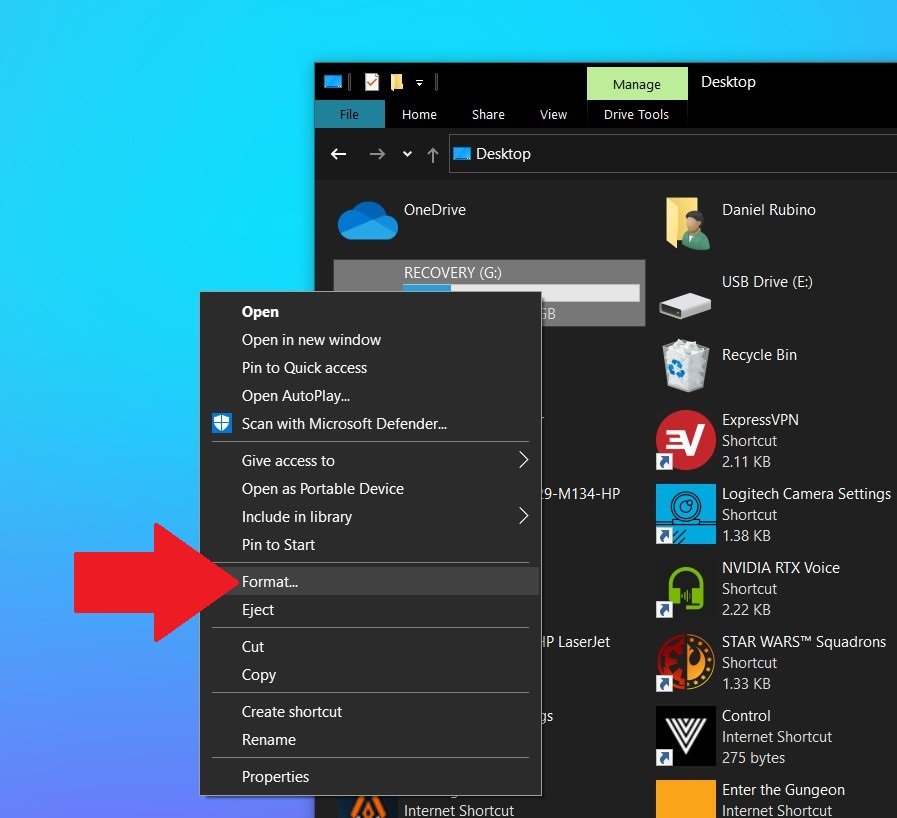
- Use Fat32 for the file system and use the default allocation size.
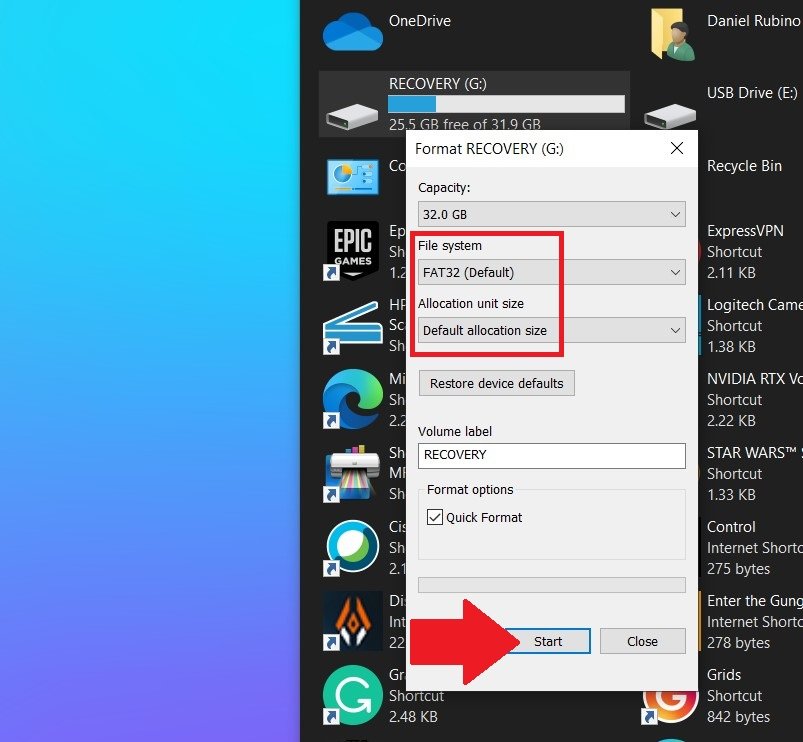
- Download the 6.4GB of Surface Pro X Recovery Files by entering in your Surface Pro X serial number
- Unzip and extract all the Surface Pro X Recovery Files to the USB drive

Put the thumb drive to the side for now, as it will be used after we swap the SSD.
Surface Pro X: Swapping the SSD
Now that we have the substitute SSD and necessary tools, we can begin replacing the Surface Pro X's storage. Please ensure you have backed up any files, photos, videos, or documents before removing the old SSD.
- Power down Surface Pro X
- Open the rear SIM/SSD panel found under the kickstand using a SIM tool
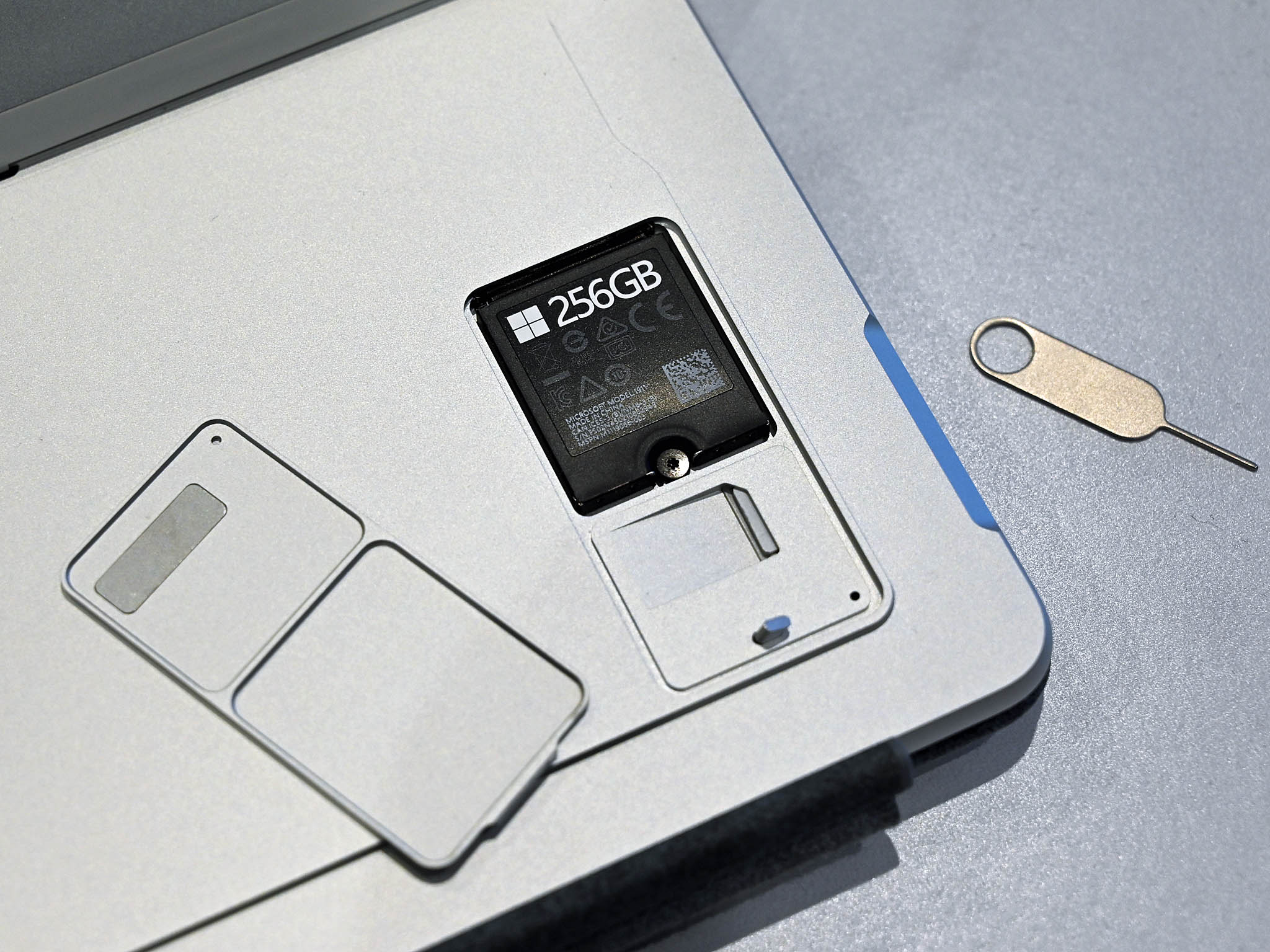
- Use the T3 Torx screwdriver to remove the single screw holding in the SSD
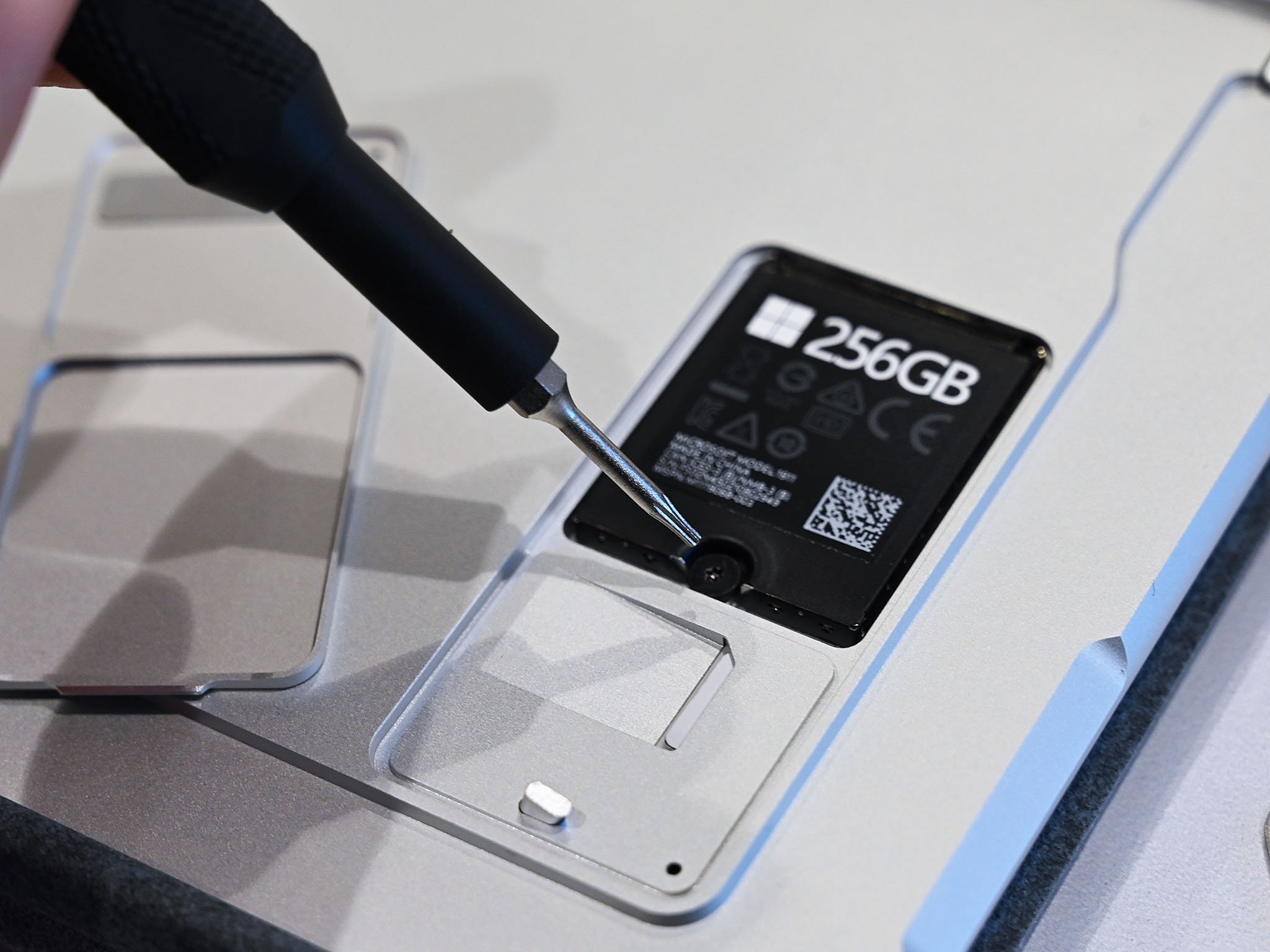
- Gently lift the SSD up at a slight angle and pull out from the M.2 slot
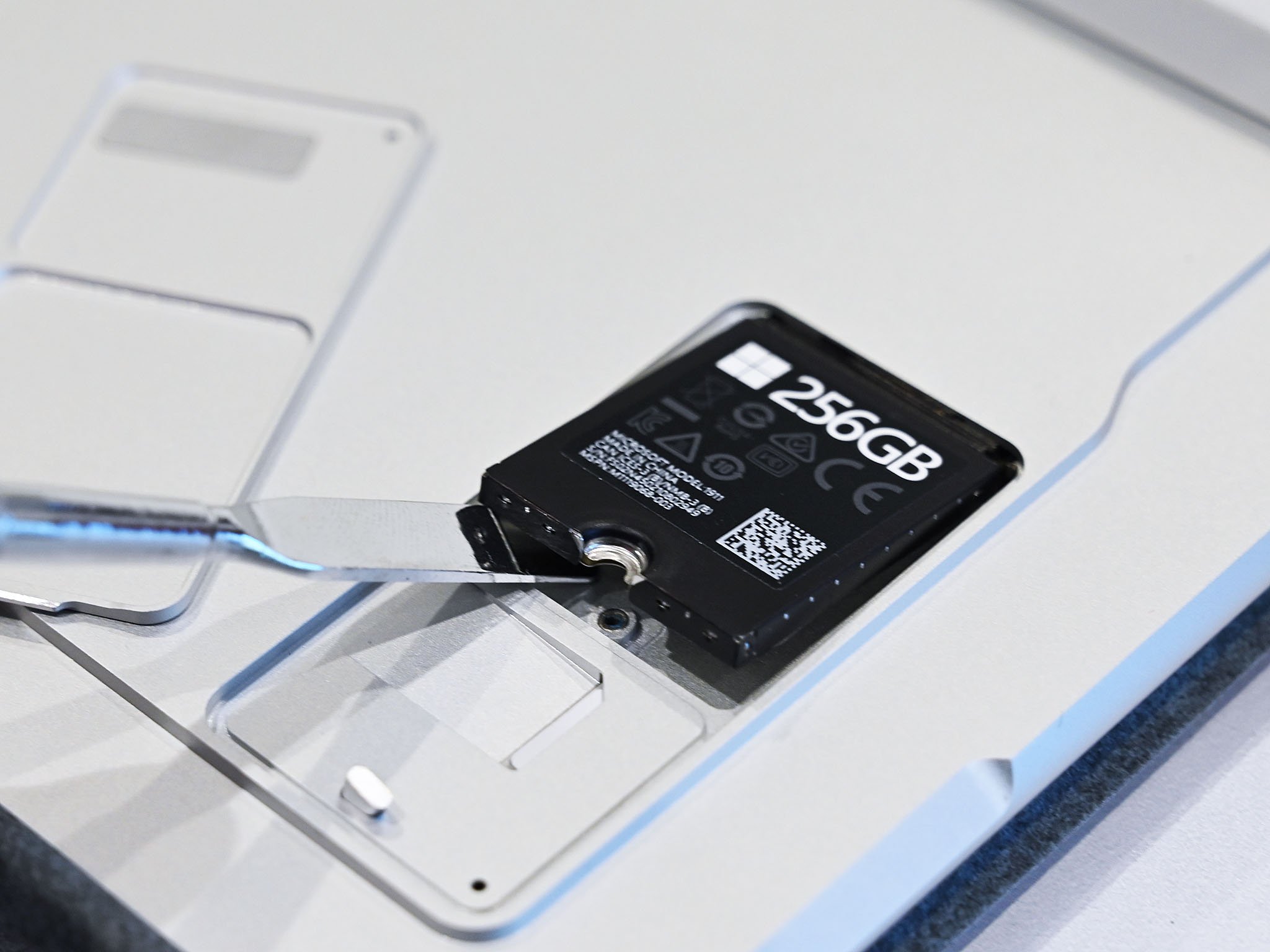
If you do not plan to re-use the SSD metal enclosure, you could slide in the new SSD and secure it with the holding screw. Once completed, move on to the next section on reinstalling Windows 10.
If you want to re-use the SSD enclosure (and re-paste it), continue to these steps:
- Using a thin prying tool or X-ACTO knife, gently tease apart the enclosure starting from each side
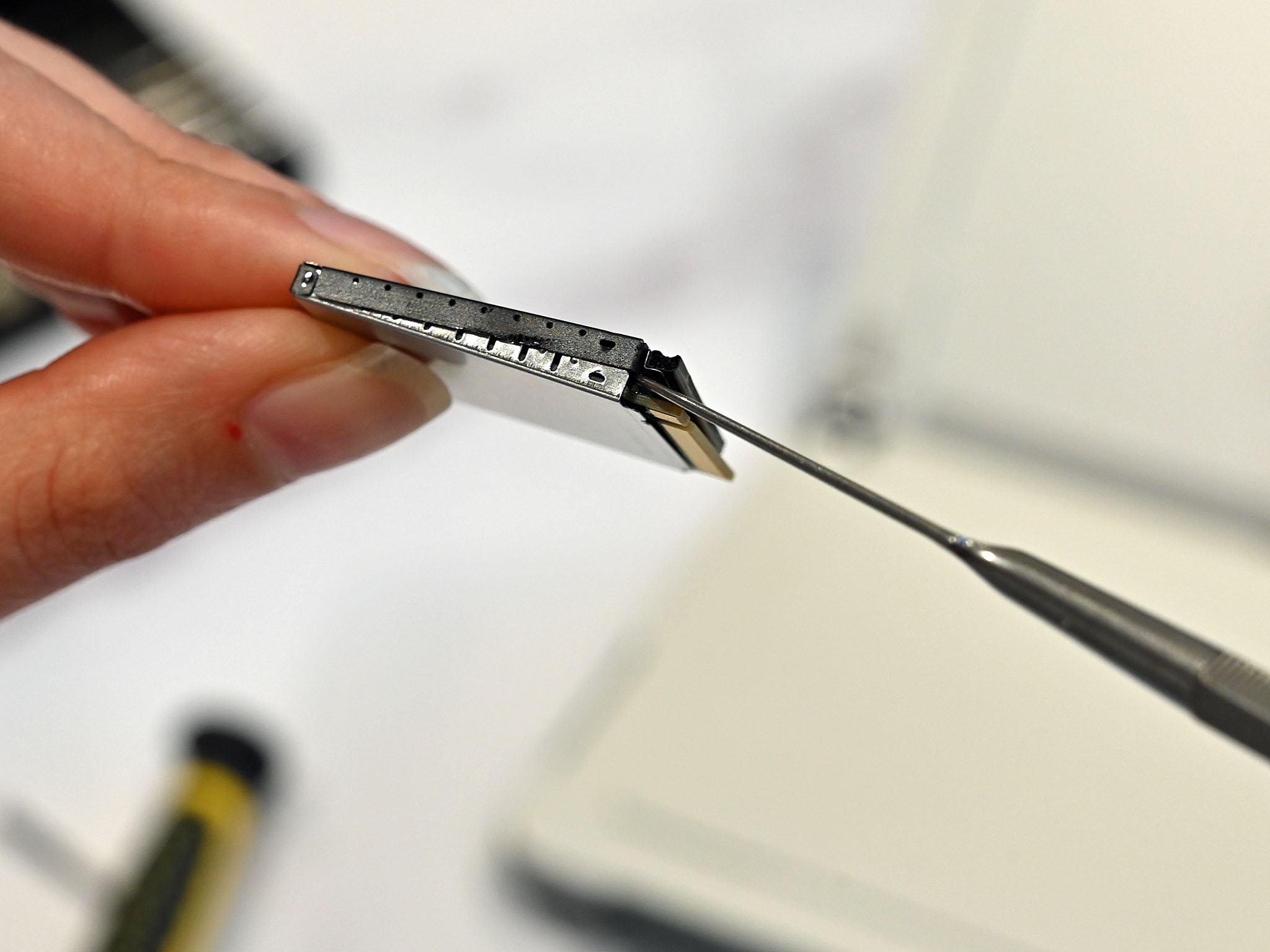
- Remove the old SSD
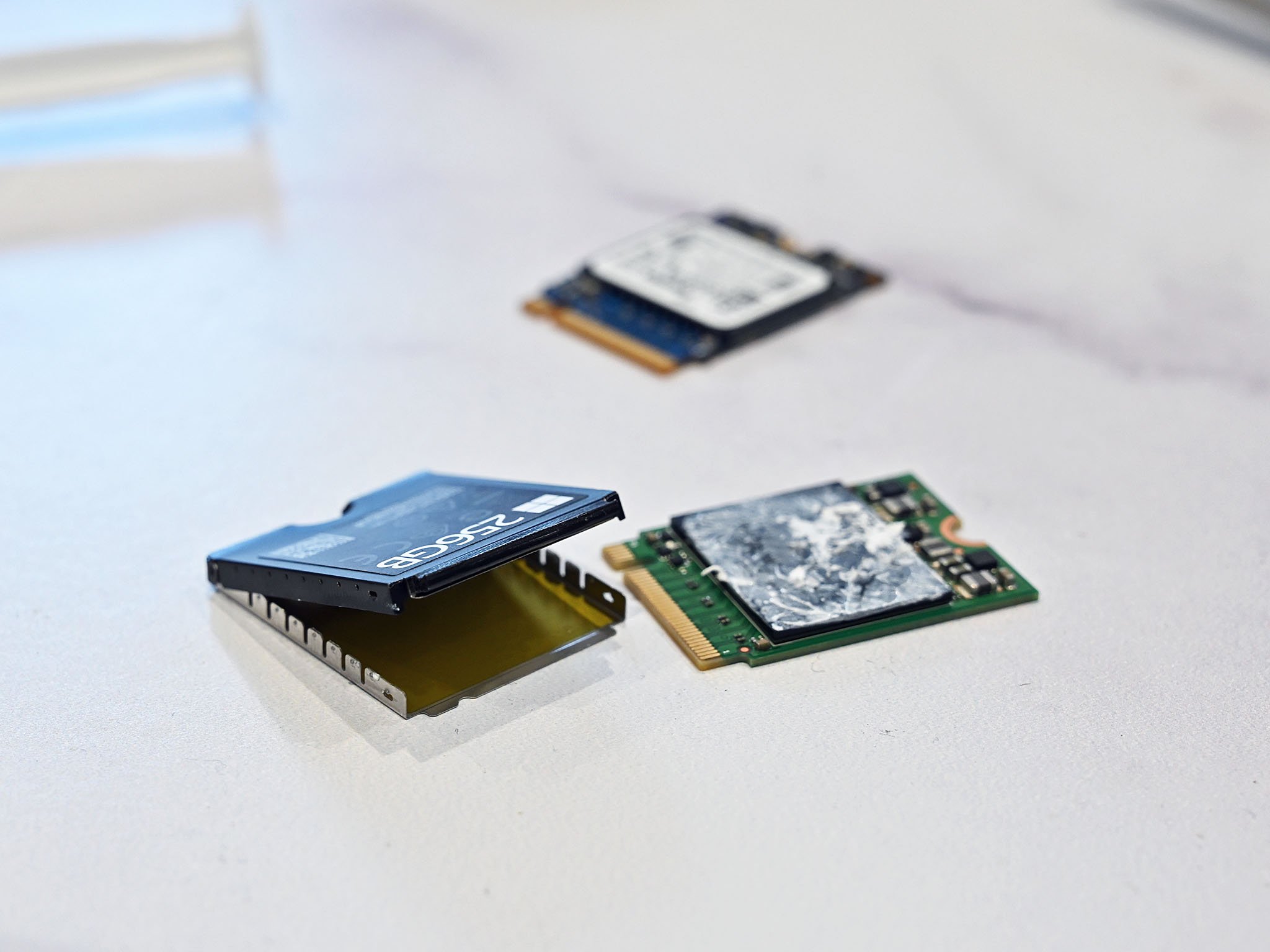
- Remove old thermal paste using rubbing alcohol and Q-Tips
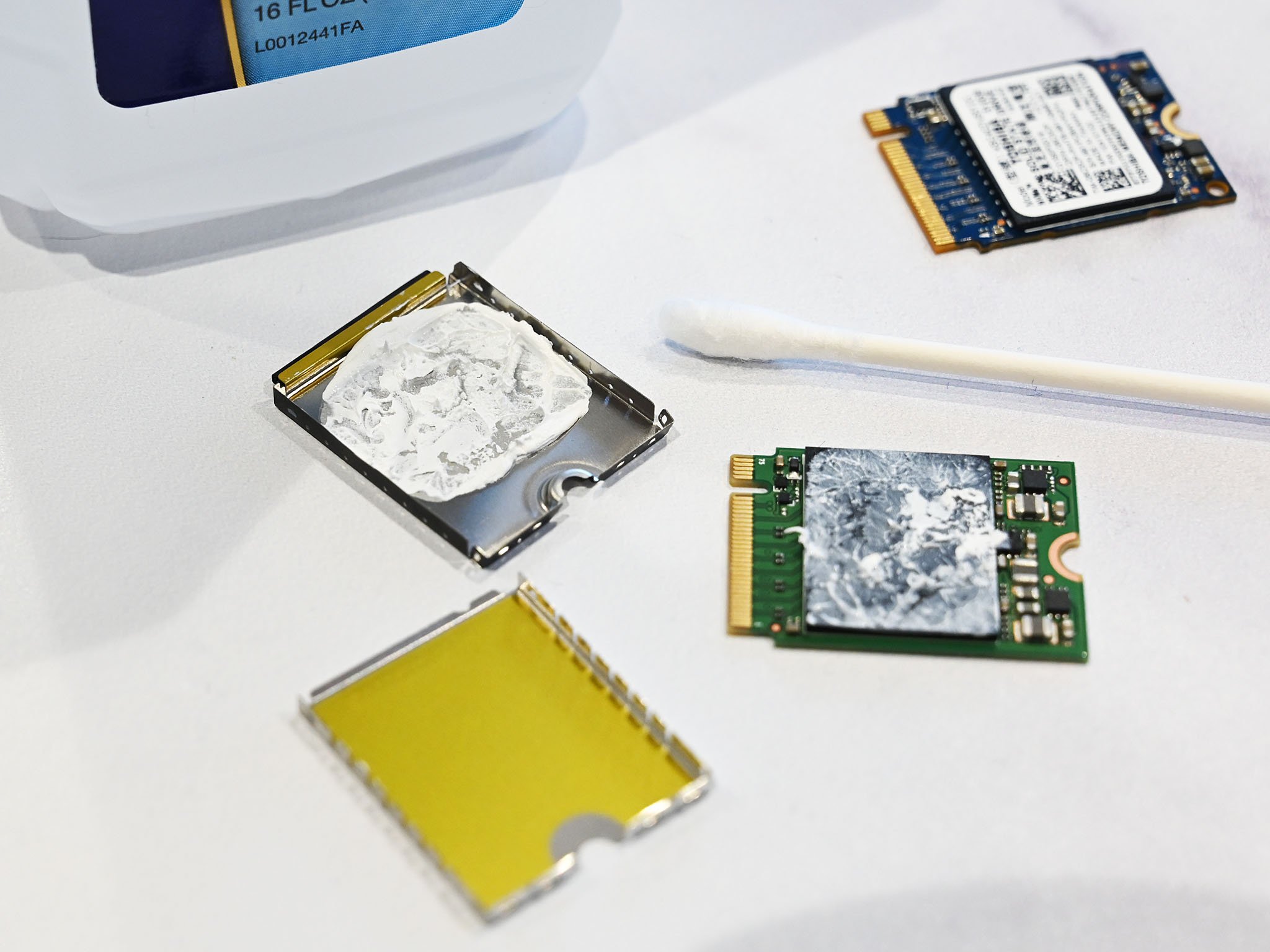
- Remove the label/sticker from the new SSD
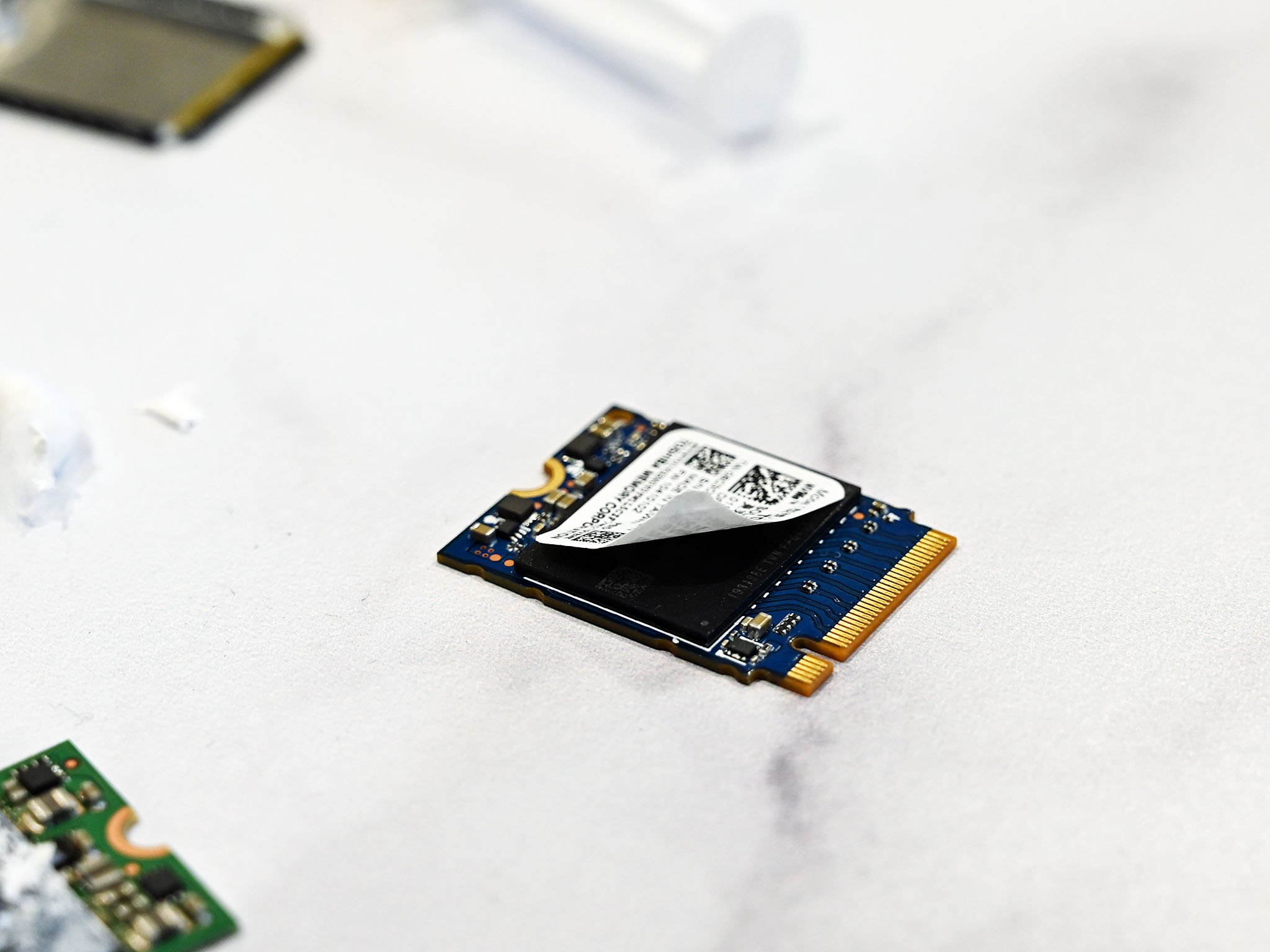
- Add a tiny drop of thermal paste to the top of the SSD (1/2 a pea)
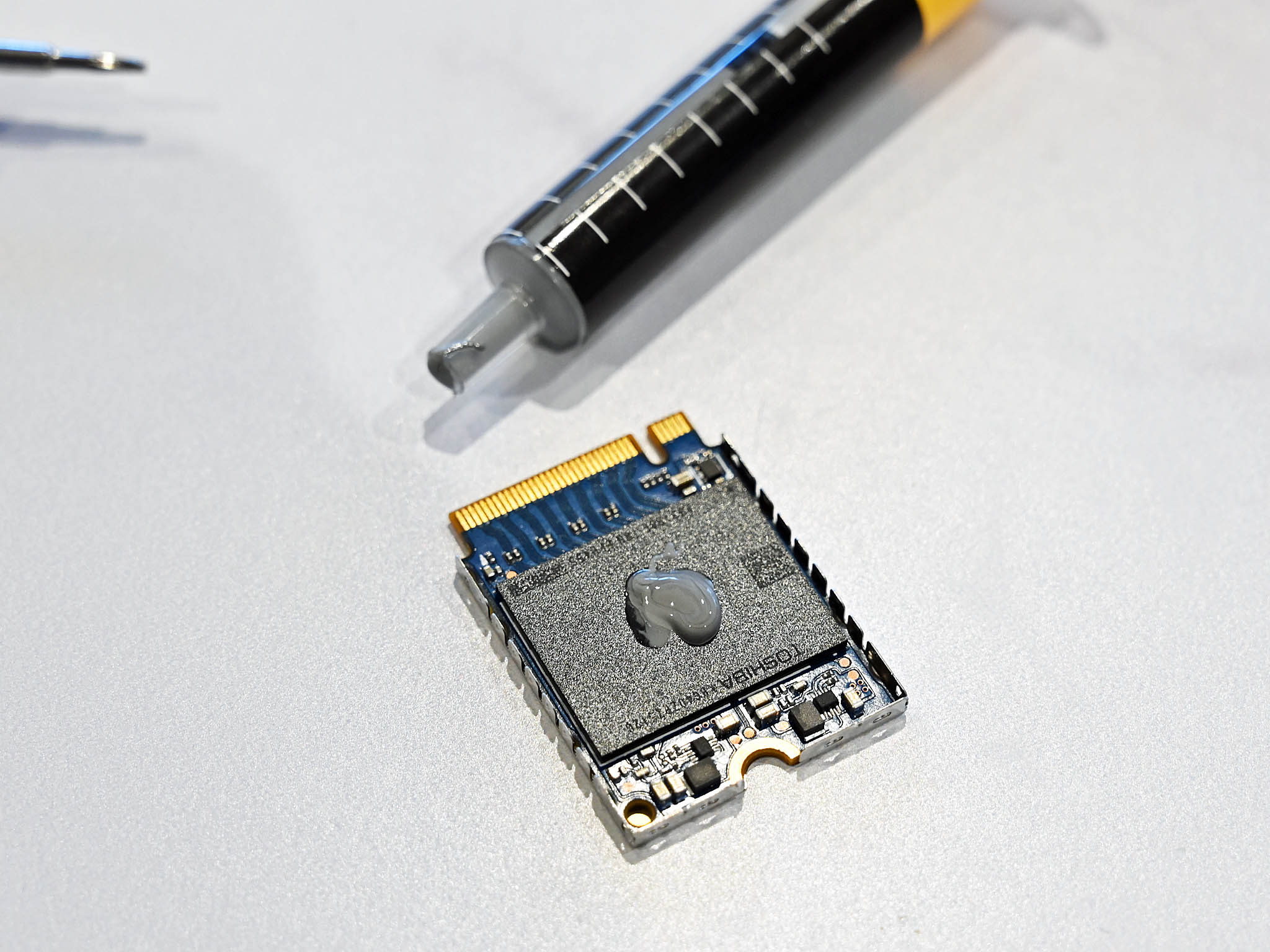
- Gently smooth the paste around the entire black area of the SSD
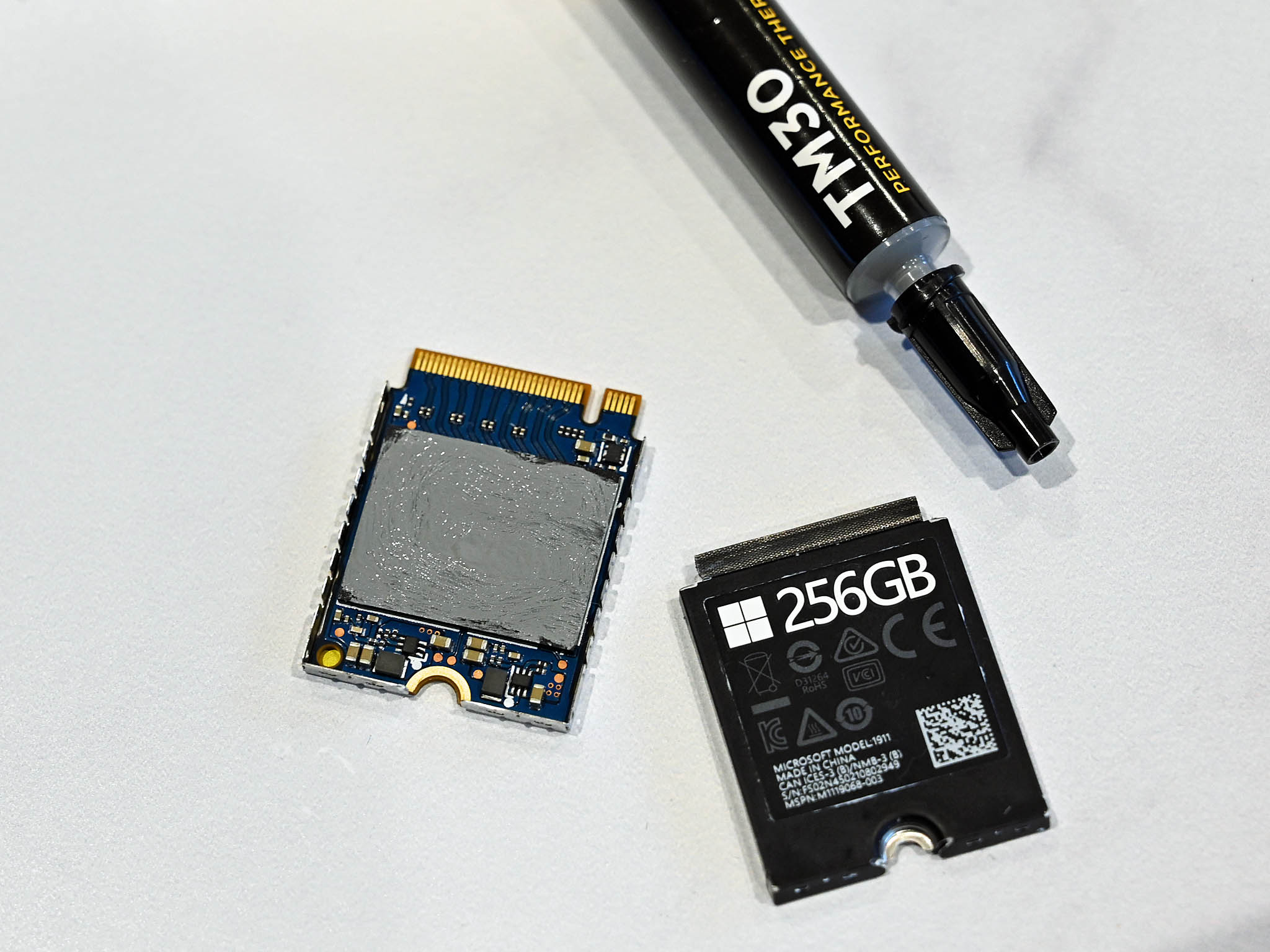
- Put the SSD back into the enclosure and close it, lightly pressing the sides to crimp it in place
- Reinsert SSD enclosure into Surface Pro X securing it with the single set screw
- Replace rear enclosure door
Please do not add a lot of thermal paste as it is not strictly needed. Nor do you need expensive thermal paste, as this is not a high-performance CPU. You want a very thin layer when spread out, as too much paste defeats the purpose.
Once completed, you should save the old SSD. If you send in your Surface Pro X for a Microsoft warranty claim because it breaks, you'll want to put back the original drive and keep your after-market purchase as you may not get it returned.
Surface Pro X: Reinstalling Windows 10
Now that the new SSD is in place, you need to reinstall Windows 10. It is recommended to have Surface Pro X plugged in for AC power during this process.
- Insert the USB thumb drive into Surface Pro X
- Press and hold power and volume down (-) buttons at the same time
- When the Surface logo appears on screen release only the power button
- Continue to hold the volume down (-) key for 10 seconds until the recovery menu appears
- From the blue Windows recovery menu choose your language
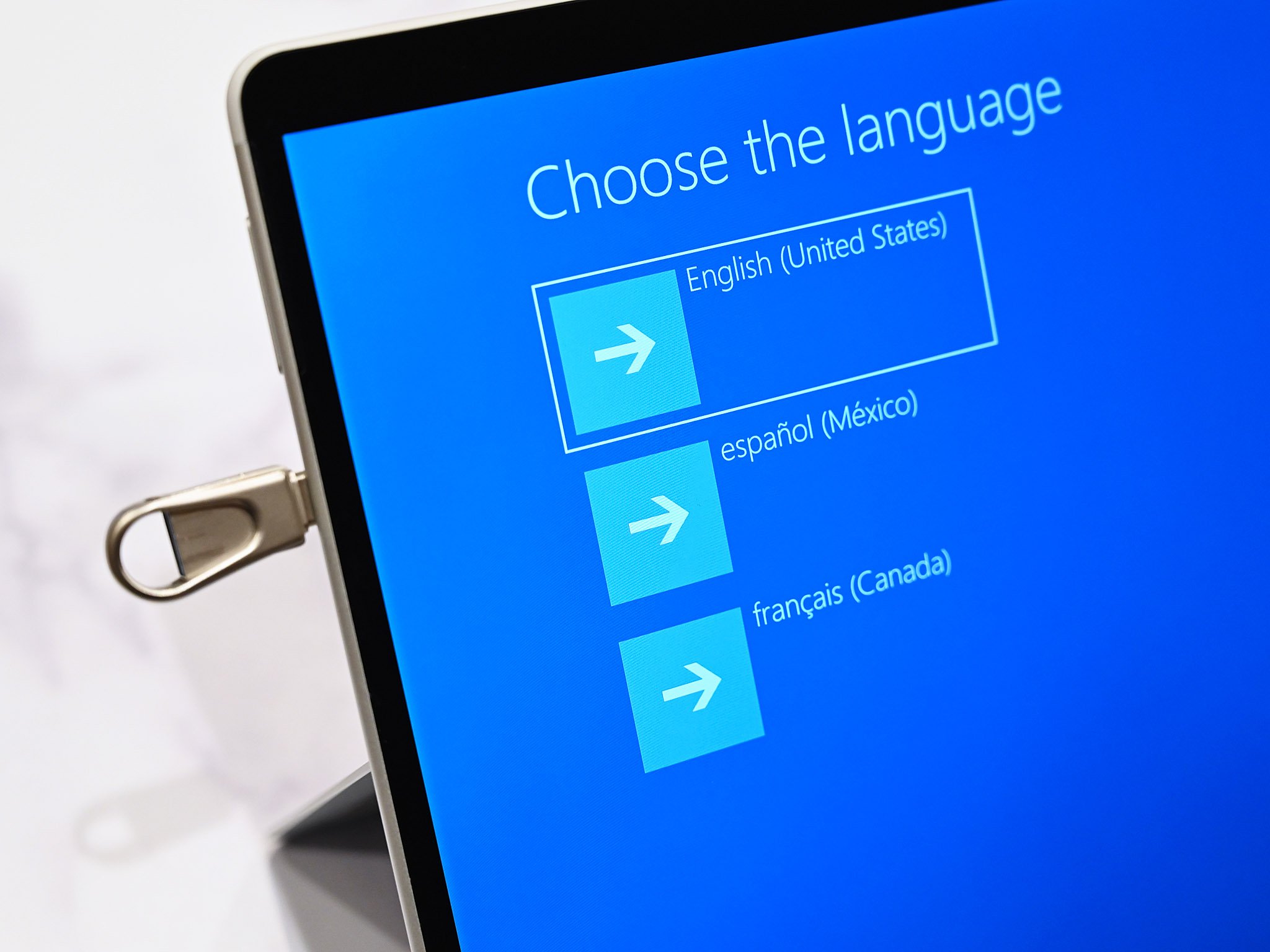
- On the next screen, select Recover from a drive

- Follow the rest of the prompts to reinstall Windows 10
Reinstalling Windows 10 should only take about ten minutes. You will want to check for updates using the Windows updater to get the latest drivers and version of Windows 10 and update your apps.
Surface Pro X SSD Upgrade: Results
Upgrading the Surface Pro X SSD brought two enhancements. Storage size increased from 256GB to 512GB, which is the main point of this upgrade. While 1TB would have been nice, the $300 price tag and my needs did not necessitate such a purchase. Still, it is fantastic to have the option if you need it.
Additionally, storage performance increased, which is expected from the improved Toshiba BG4 drive.
Read performance is what you experience when running Windows 10 and launching apps. Write performance is when you write to disk for creating large files, installing apps/games, and transferring data – that is, it is rarer. With the new BG4 sequential reads went from 1,943 MB/s to 2,302 MB/s. But the more significant change is in sequential write performance, which jumped from 718 MB/s to 1,545 MB/s, which is considerable.
While sequential speeds did see a significant bump, random read and write did not.
The performance increase is welcomed but also not game-changing. Apps and games will load a smidge faster, the system will be more responsive, but it also does not affect the overall performance measurably.
Overall, this is a fun and easy upgrade for Surface Pro X. It's great to see Microsoft embrace a more modular approach to its Surface line. I hope to see such modifications come to other Surface devices in the future.
Now available
Microsoft Surface Pro X SQ2
The thinnest and lightest Surface Pro available – now better
Refreshed for late 2020 is the new Surface Pro X with the SQ2 processor. With a faster CPU, more powerful GPU, improved battery life, x64 app emulation, and now in platinum, there is a lot to like here. You can even now pick multiple colors for the Signature Keyboard with Slim Pen Bundle




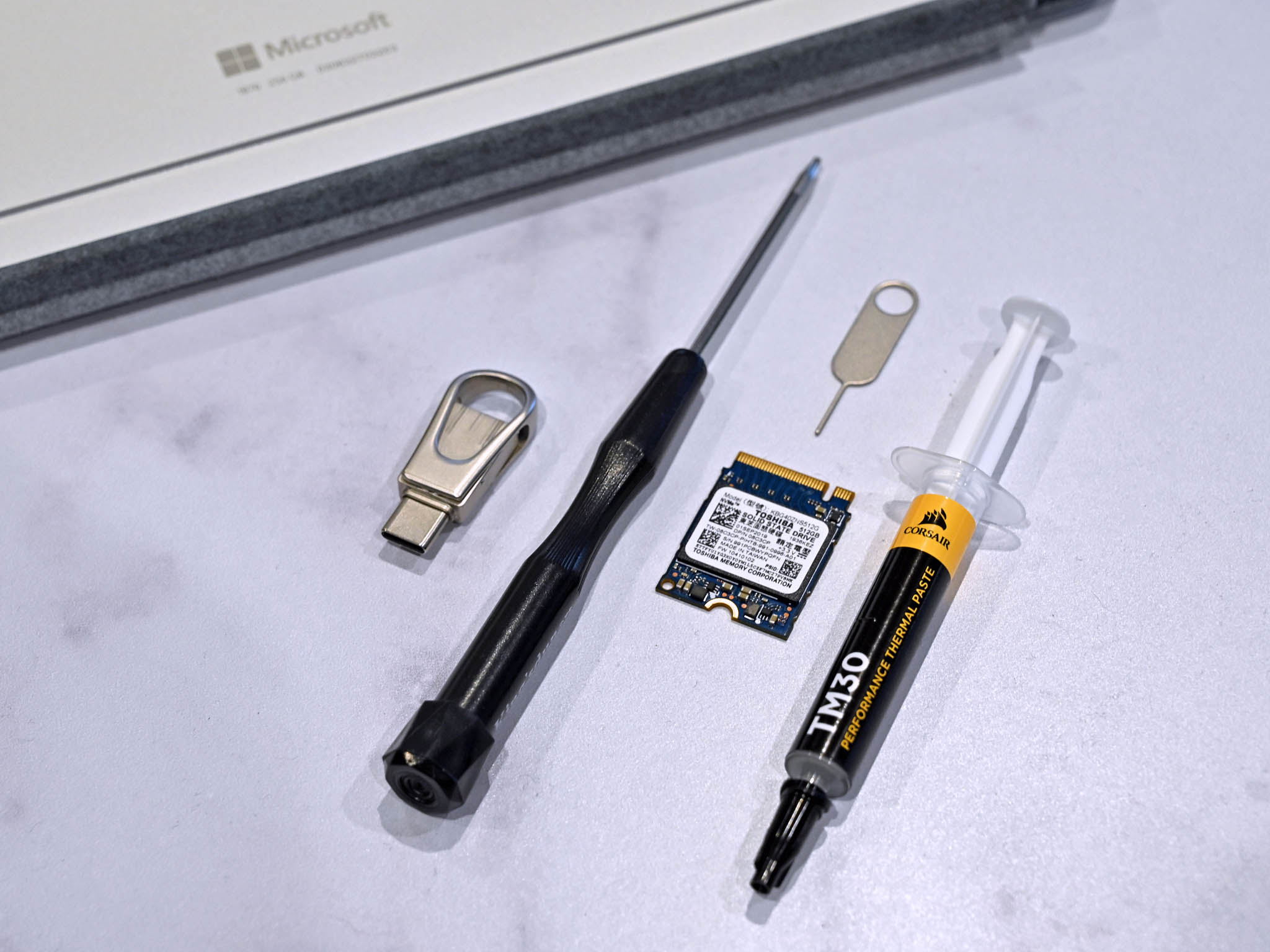
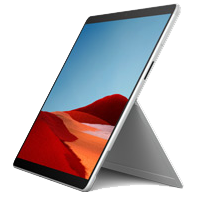


0 comments:
Post a Comment